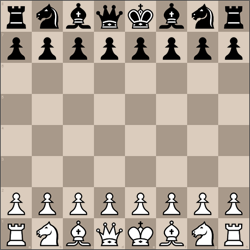< Prev Index Next >
 Chess 16 Jun 1918, Sun The Philadelphia Inquirer (Philadelphia, Pennsylvania) Newspapers.com
Chess 16 Jun 1918, Sun The Philadelphia Inquirer (Philadelphia, Pennsylvania) Newspapers.com
In the letter that we received last week from Stasch Mlotkowski dated Los Angeles, Cal., we note the following interesting comment on our article published several weeks ago, as to the importance of the imagination in making a first-class chess player. Mr. Mlotkowski comment is as follows:
“I cannot agree with you as to Rubinstein lacking imagination. When did either Capablanca or Lasker play such a game as he played against Rotlevi at Lodz in 1908, see Handbuch page 862. His combination in this game is not excelled by any of the performances of Anderssen, Morphy or Zukertort. Also see Handbuch page 320, Col. 29 and note 4 for his game with Salwe at Lodz in 1907. Also see L'Eco Degli Scacchi, August, September, 1917, for his game with Belsitzmann at Warsawin, March, 1917.”
Mr. Mlotkowski misunderstood our comment. If we recall correctly we stated that all first-class chess players must possess imagination of a fairly high degree, and Rubinstein unquestionably ranks among the first-class masters. We do believe, however, that Rubinstein, Tarrasch, Schlecter and several other of the leading chess masters of the present day have not the imagination possessed by Dr. Emanuel Lasker or Jose R. Capablanca and personally we are inclined to believe that Marshall, the American champion, has more imagination than either Rubinstein or Tarrasch. Imagination, however, cannot be mathematically measured and it is a personal equation and very few leading players would likely entirely agree on the relative degrees that different players now possess this quality.
(a) It is always a pleasure to see the Gambit accepted. For the past twenty years, however, the chess masters in important games have almost invariably declined the Gambit, the usual method being 4. B-N3. This move yields Black a thoroughly safe and satisfactory game.
(b) Even now after the Gambit has been accepted Black can obtain a good game by playing P-Q3, giving up the Gambit Pawn. This line of play was first brought into prominence by Dr. Lasker.
(c) White played this move with the object of getting his B-R3 and then to K6 closing the file.
(d) An interesting sacrifice, Black obtains three Pawns for the piece sacrificed. Mlotkowski states in his comments to us on the game that the sacrifice is unsound, but not plainly so, as Black came within an ace of winning.
(e) This move Mlotkowski considers the winning combination. He returns the Queen for the Rook and Bishop, winning on the end game.
Stasch Mlotkowski (white) vs. Elmer Walker Gruer (black)
Italian Game: Evans Gambit, McDonnell Defense, Main Line
Submitted to chessgames.com on 05/05/2025
The following two brief games were furnished us by W. M. H. Russell, Jr., who informs us that he is now contesting twenty games by correspondence. The game given below was won by Mr. Russell in short order. It is of interest on account of the unusual form of the Sicilian Defense adopted by Black.
William H. Russell, Jr. (white) vs. J. L. B. (black)
Sicilian Defense: Closed
Submitted to chessgames.com on 05/05/2025
This game not played by Mr. Russell was, however, forwarded to us by him and was also played in the recent correspondence tournament.
L. A. S. (white) vs. H. W. (black)
French Defense: Queen's Knight
Submitted to chessgames.com on 05/05/2025























